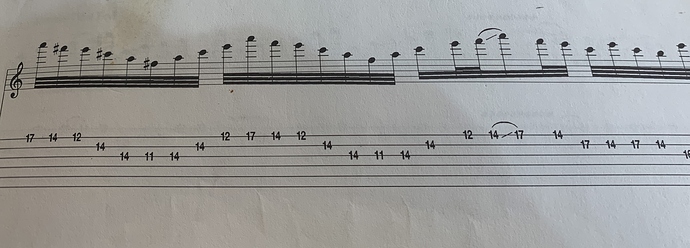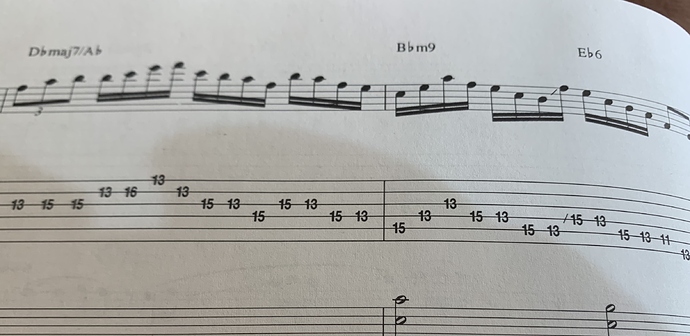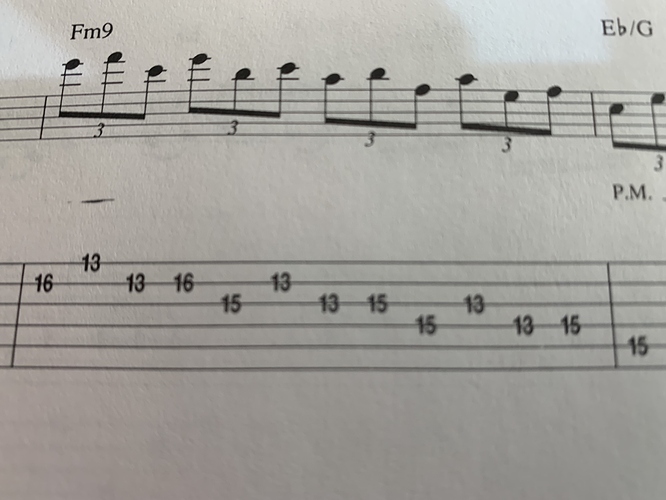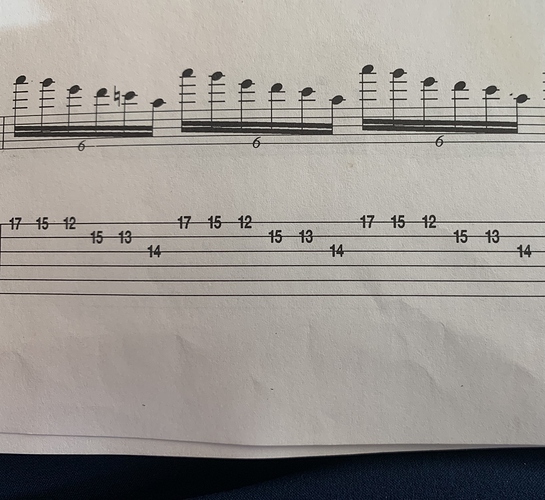Anybody up for Troy to do a EJ cascade tutorial part 2? His first one was brilliant, but feel there are so many other incredible licks thru Eric’s career from his studio albums to live performances that need to be discussed. I certainly would be the first one to buy it. 
I would love it!
Some suggestions:
- dream scenario: get EJ on CTC and let Troy do his thing

if that’s not happening:
- Analyze one or more classic EJ songs (or solos) in their entirety.
Yeah the COD intro to the Austin City Limits alone would be the price of admission. So many great ones. All about you, camel’s night out, lonely in the night, zap, etc
If Troy decides to do a sequel to Cascade, involving Peter C. in the process would be incredible. It would really take things to a superhigh level.
Imho Peter C. has a deeper understanding of EJs playing, technique and sound than any other human apart from EJ himself 
Cascade II involving Troy with EJ or Peter C., or both, would probably by amongst the top 10 instructional videos of all time and I’m not exaggerating.
I really hope we can find a way to make it happen. 
Fun idea, and I don’t think we’re opposed in principle to more EJ material, but we have enough other stuff on the to do list that we haven’t already made a multi-hour seminar on that we probably can’t make this a priority for now 
Big question would be if the demand here is for additional EJ tutorial just b/c his playing and songs are awesome, or if you think there’s further technical mystery yet to be revealed. The former of course is a totally valid request, but we’d mainly be interested in the latter.
Put another way, is there stuff you’re thinking of that EJ plays that one might still be confused by even after watching all of the existing Cascade material?
To be clear, if we get a chance to have EJ in to the studio for an interview at some point, we’d be thrilled to do it! @Peter_C collab could be cool as well!
To answer your question it would definitely be the latter. From what I’ve seen from him he’s not always a strict switch strings on a upstroke player like Troy says. If you look at these tabs below which are licks from Camels Night Out, lonely in the night says to me that he’s either a upward pickslanter as well or he’s hybrid picking in between his alternate picking. I know those tab books aren’t always accurate though so it would be interesting to see what Troy thinks.
Thanks for all the kind words everyone 
Regotheamigo, EJ has changed and evolved plenty that some of the particular “eras” of EJ that Troy chose to dissect may overlap only generally to other eras of your interest. He’s too far versatile of a musician to be married to a particular modus operandi, but Troy’s analysis of that era of EJ is invaluable and right on the money. The down down up is not the only thing about EJ quite rightly so, but Troy himself never promised that.
So your assertion about EJ definitely holds true, regardless of the fact that many tabs are incomplete.
The beauty of figuring out things beyond the two note per string economy picking is that you can basically have all the freedom to do it your way (even EJ is not the same night after night). Perhaps with the exception of some iconic melodic pieces (such as lonely in the night), the real beauty of his music is that it’s largely open to performance-interpretation, as long as it fits the ethos, and plus, who wants to listen to their teacher all the time?! J/k, Troy is fantastic and probably the finest teacher I’ve never met.
A good thing with his lessons is that it’s what physicists call time symmetric and you can try to play it backwards (which would make the bulk of it ascending licks) and they sound glorious as well. Once I wore out the descending cascades, I just did them backwards because my ascending stuff was pretty poor so I needed all the help I could get.
I personally think EJ has gotten lost a bit with his technique though the years and wish he’d go back to more straight alternate picking like he did back in the early 90’s but that’sa whole other topic.  In my opinion I think him always going off on the “bounce technique” has screwed his picking technique up because well,he’s bouncing around. And because of that it’s not as smooth as it use to be. Troy even talks about it that when Eric goes into fast mode the bounce completely disappears and he starts doing traditional up and down movements across the strings. But that was a Analysis of his Total Electric Guitar playing that came out over 30 years ago. I think he started incorporating legato more in his playing because the bounce picking is making him sloppy. Just a thought.
In my opinion I think him always going off on the “bounce technique” has screwed his picking technique up because well,he’s bouncing around. And because of that it’s not as smooth as it use to be. Troy even talks about it that when Eric goes into fast mode the bounce completely disappears and he starts doing traditional up and down movements across the strings. But that was a Analysis of his Total Electric Guitar playing that came out over 30 years ago. I think he started incorporating legato more in his playing because the bounce picking is making him sloppy. Just a thought. 
That’s a fair take as well. Other contexts might include just him getting bored with certain aspects of guitar whether it’d be gear/music (heck if virginia and several bursts don’t make it then sure as heck economy sweeps won’t), playing piano/acoustic exclusively for several years, playing with other players such as mike stern etc., and just getting old…really old. Guess everything changes as we slow down.
Still, no one does ej better than ej does and it’s freaking remarkable he’s still touring like it’s 1991.
@Regotheamigo @Peter_C. Someone just put up the EJ fine art of guitar video on YouTube. There is a part in there Eric specifically states that it is important to him not only have his traditional technique down but also his hybrid picking. He then begins to use hybrid picking to rip through pentatonic scales. But not in his traditional hybrid picking for effect (ala end of cliffs of Dover intro), more like Tom Quayle style hybrid(obviously more two note per string than three like Tom). This to me combined with the sliding technique is where that smooth sound on Venus isle comes from in part. The lack of that slightly more percussive picking sound is what stood out to me on Venus isle. I saw him recently and he actually played a kinda improved version of lonely in the night. He actually only played maybe 35 percent of the original ending solo, but you could see his ring and middle fingers moving when performing the big “cascade” in the middle of the ending solo. Which truly proves that everything really does equal everything in Eric’s mind.




